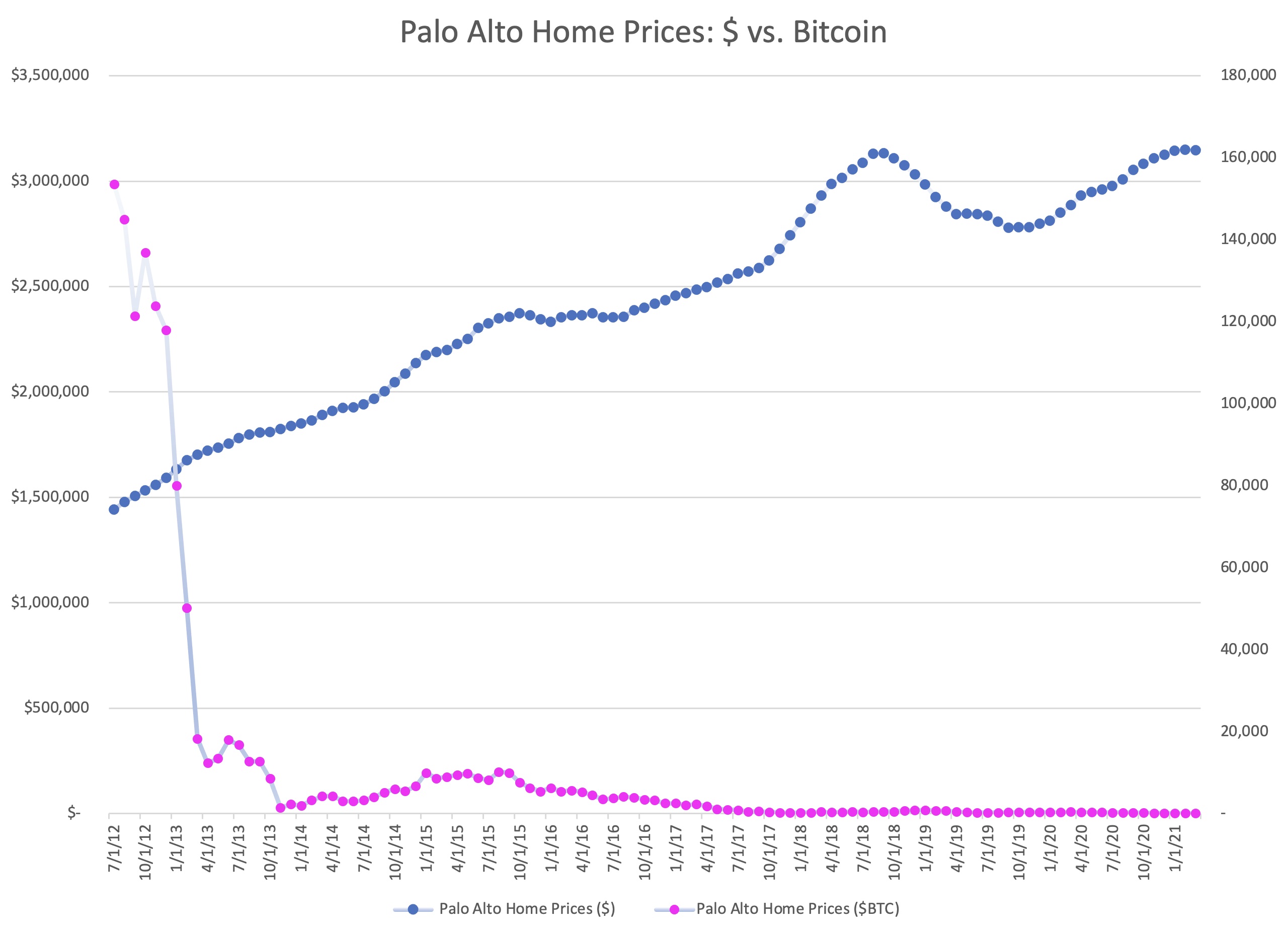Real estate and Bitcoin: What you need to know

The emergence of Bitcoin and the cryptocurrency market as asset classes have garnered a lot of attention and interest over the last few years. However, while their growth is often measured in terms of valuation or market cap, what’s also worth noting is that the same can be pictured by way of comparing it to mainstream asset classes.
Consider comparisons with gold, for example. While the first halving pushed Bitcoin’s market cap to a fraction of Gold’s, its second halving cycle peaked at about 5%. On the contrary, with a market cap of over $1 trillion on the back of an exponential surge over the past few months, BTC’s market is now valued at just over 10% of Gold’s. In fact, such has been the scale of the former’s growth that there are many like Mike Novogratz and Ark Invest who believe that Bitcoin will soon overtake the yellow metal.
Home prices v. Bitcoin
What these aforementioned comparisons clarify is that over the past few years, no asset class has been able to keep up with the growth of the Bitcoin market. Ergo, it’s worth looking at another popular category of assets to see how they stand up against the world’s largest cryptocurrency – Home prices.
The Case-Schiller index, a standardized measure of changes in home prices across the U.S, can be used for the same. According to the findings of a recent Ecoinometrics report, when the index is used as a reference,
“…. houses in the U.S have been getting 10 times cheaper in BTC after every halving.”

Source: Ecoinometrics
That isn’t an unexpected finding, however. After all, such has been the growth of the cryptocurrency’s market. That being said, perhaps a more local and specific example would be more useful in ascertaining the scale of such growth.
The curious case of Palo Alto
This was the crux of the efforts undertaken by Silverback CEO Adam Nash in a recent blog post. For the purpose of the same, Nash looked at home prices in Palo Alto. Here, the use of Palo Alto as an example is especially interesting since most financial estimates of housing costs are linked to incomes and mortgages, in Silicon Valley, technology companies compensate their employees with equity.
Nash’s report found,
“As measured in US dollars, the average price of a house in Palo Alto has increased by 117.9% in less than 10 years. However, as measured in Bitcoin, the average price of a house in Palo Alto has decreased by 99.96%.”

Source: Adam Nash
According to Nash, there is an “apparent detachment of equity and crypto prices from the prices of Palo Alto real estate,” with the exec suggesting that this may be due to the fact that 1) The real estate market is much slower than the crypto or equities market and, 2) Windfall money from equity and crypto markets may be flowing into other places rather than local real estate.
That looks bad for real estate, right? Well, yes and no.
No, because in absolute terms, home prices across the United States have risen despite an ongoing pandemic.
Yes, because looking at home prices alone doesn’t help in identifying who exactly is buying and pushing home prices. After all, with a pandemic and all, it’s hard to fathom who will be capable of buying, right?
Well, homeownership has actually been on a decline over the past year. In fact, according to a Wall Street Journal report, what is happening actually is that institutional investors including pension funds are now getting into real estate to “park their cash.” Why? Because they are worried about inflation.
“By scooping up rental real estate they get a hedge against inflation that is also generating yield in the form of rental income.”
THE Hedge against inflation
With more and more institutions now trying to diversify to hedge against rising inflation, an opportunity is opening up for Bitcoin and cryptocurrencies.
Now, Bitcoin has long been advertised as a hedge against inflation, but people forget that the cryptocurrency and the larger asset class are still in their nascent phase in terms of adoption. Ergo, there is still a long way to go before BTC is recognized as a hedge as good as gold or real estate. What this also means is that if it is real estate today, Bitcoin and cryptocurrencies will be tomorrow, a transition that will only be accelerated if an ETF gets the green light in the USA.
In fact, one might argue that such a transition has already happened. According to Agreus Group’s Tayyab Mohamed, for instance, one single-family office has completely shifted its investment portfolio of about $2.8 billion away from real estate to new asset classes including cryptocurrencies. $2.8 billion. That figure is greater than the entire market cap of Dash.
It is also a fraction of the investments that will soon come into Bitcoin when it is finally recognized as THE hedge against inflation.






